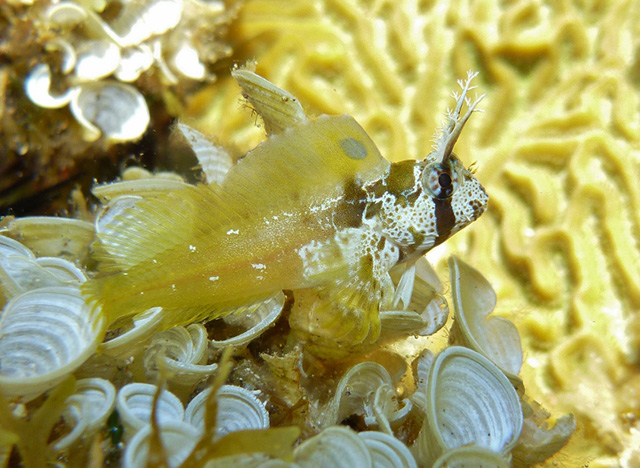| Blenniidae (Combtooth blennies), subfamily: Salariinae |
| 5 cm TL (male/unsexed) |
|
demersal |
| Western Central Atlantic: Bahamas (Ref. 5521) and Cuba (Ref. 26340). |
|
Dorsal spines (total): 11-12; Dorsal soft rays (total): 13-15; Anal spines: 2; Anal soft rays: 15-16. Gill opening extending ventrally to opposite 4th-7th pectoral-fin ray; segmented dorsal-fin rays 13-15; segmented pelvic-fin rays 3; last dorsal-fin spine 8.5-15.5% SL; dorsal-fin spines slender and flexible; elongate fleshy flap, which usually projects laterally, present posteriorly on lower lip; infraorbital bones 4. |
| Adults inhabit shallow rocky areas (Ref. 5521). Oviparous. Eggs are demersal and adhesive (Ref. 205), and are attached to the substrate via a filamentous, adhesive pad or pedestal (Ref. 94114). Larvae are planktonic, often found in shallow, coastal waters (Ref. 94114). |
|
(Ref. 96402)
|
| harmless |
|
Source and more info: www.fishbase.org. For personal, classroom, and other internal use only. Not for publication.
Page created by Jen, 05.08.02,
php script by kbanasihan 06/09/2010 ,
last modified by
dsantos, 20/08/10

